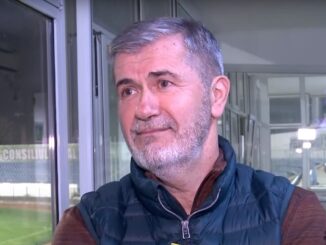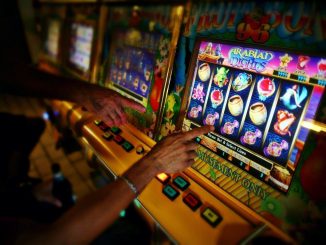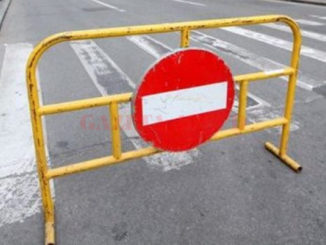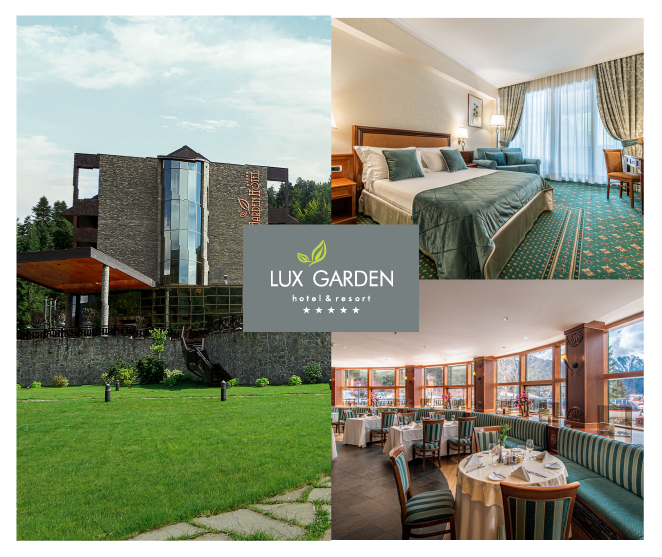
Arătarea pisicii prin confecţionarea de dosare la DNA şi mituirea pe căi legale au devenit cele mai de succes metode prin care actuala putere obţine tot ceea ce doreşte, fie de la propriii parteneri de coaliţie, fie de la opozanţii care sunt convinşi prin astfel de mijloace să treacă de partea regimului Băsescu-Boc.
Două întâmplări petrecute în ultimele două săptămâni ne arată că, şi în privinţa exploatării cu cianuri a aurului de la Roşia Montană, puterea pedelistă – susţinătoare declarată a proiectului celor de la RMGC – nu s-a dat înapoi de la folosirea infailibilelor „arme” DNA şi banii. Este de notorietate faptul că cei din UDMR – principalii aliaţi la guvernare ai PDL – au fost dintotdeauna împotriva proiectului de exploatare a aurului de la Roşia Montană. Până în vara acestui an, când „au fost răzgândiţi”. Cotidianul.ro a pus cap la cap toate informaţiile legate de scandalul din ultimele săptămâni de la Roşia Montană şi vă prezintă filmul evenimentelelor care au dus la răzgândirea UDMR.
În 12 iulie exploda bomba „Ministrul Mediului Laszlo Borbely, cercetat la DNA, într-un dosar de cumpărare de trafic de influenţă şi mită sub forma renovării apartamentului cuscrei liderului UDMR „. Ştiţi ce a urmat: breaking news-uri şi dezbateri non-stop despre apartamentul cuscrei vicepreşedintelui UDMR, jurnaliştii fugind după soţia şi cuscra lui Borbely, la ieşirea de la audierile de la DNA Oradea, şi, cireaşa de pe tort, ieşirea plângăcioasă a lui Daniel Morar, starostele-şef de la DNA, care a reclamat în mod halucinant presiunile pe care udemeriştii şi opoziţia le fac asupra procurorilor săi în „cazul Borbely, care de fapt încă nu există”. După această cascadă de evenimente care a durat aproximativ 48 de ore, s-a aşternut brusc tăcerea asupra aşa-zisului dosar Borbely.
Aparent fără legătură cu tsunami-ul care traversase UDMR la începutul acelei săptămâni, două zile mai târziu, Kelemen Hunor iese pentru a anunţa că a semnat descărcarea de sarcină arheologică a masivului Cârnic. Cârnic este principalul motiv pentru care Comisia Naţională pentru Monumente Istorice din cadrul Ministerului Culturii recomanda acum câteva săptămâni includerea Roşiei Montane pe lista monumentelor din patrimoniul UNESCO, şi nicidecum descărcarea acestui masiv din Apuseni de sarcina arheologică. Hotărârea pe care a luat-o ministrul împotriva recomandărilor comisiei de specialitate din propria sa ogradă, pare a fi fost determinată nu doar de dosarul prefabricat peste noapte de procurorii DNA pe numele numărului doi din UDMR, Laszlo Borbely, ci şi de o sumă considerabilă de bani pe care Roşia Montană Gold Corporation (RMGC) ar plăti-o chipurile pentru conservarea patrimoniului arheologic de la Roşia Montană.
Importantă sumă de bani pe care Roşia Montană Gold Corporation s-ar fi angajat, printr-un protocol confidenţial (vezi mai jos), să o plătească Ministerului Culturii se ridică la 43 de milioane de dolari. Aceşti 43 de milioane de dolari s-ar adauga celor 25 de milioane de dolari pe care RMGC a anunţat deja că îi achită pentru avizarea proiectului la Ministerul Mediului. Şi apropo de avizele de mediu pe care RMGC pe care trebuie să le obţină de la Ministerul Mediului, surse din conducerea UDMR au declarat în exclusivitate pentru cotidianul.ro că în UDMR se ştie foarte clar că ministrului Mediului, Laszlo Borbely, i s-a fabricat un dosar peste noapte „preventiv, pentru a nu se gândi să împiedice sau să întârzie obţinerea avizelor de mediu pentru proiectul celor de RMGC”.
Angajamentul despre care facem vorbire există la această oră sub forma unui protocol semnat între Dragoş Tănase, directorul RMGC, şi Kovacs Josef, directorul Institutului Naţional al Patrimoniului, instituţia din subordinea Ministerului Culturii.
Cotidianul.ro a adresat pe cale oficială întrebări referitoare la veridicitatea acestui document, atât Institutului Naţional al Patrimoniului, cât şi Ministerului Culturii, precum şi firmei Roşia Montană Gold Corporation. La INP ni s-a răspuns că directorul instituţiei, udemeristul Kovacs Josef, se află în concediu de odihnă şi că, pe cale de consecinţă, nu poate fi deranjat. Directorul de relaţii publice al INP, o doamnă care s-a bâlbâit oarecum speriată că nu ştie nimic de un asemenea protocol, ne-a spus că de fapt ar trebui să nu îi mai întrebăm pe ei, pe cei de la INP, şi să vorbim la Ministerul Culturii.
La ministerul lui Hunor am avut şi mai puţini sorţi de izbândă: simpla rostire a numelui ziarului nostru a generat o reacţie de tipul celor pe care le întâlneam până acum doar la instituţiile conduse de pedelişti: „Aaa, de la Cotidianul sunteţi?! Ce să vă zic, haideţi, vă rog reveniţi cu un telefon mai târziu să vedem ce vă putem răspunde legat de acest protocol”. Previzibil, „mai târziu” a însemnat că nimeni din Ministerul Culturii nu ne-a mai răspuns nici până în ziua de azi.
Ziarul nostru a adresat acelaşi set de întrebări şi celor de la Roşia Montană Gold Corporation. Telefonic în prima fază, şi imediat după, şi în scris, via e-mail. Andreea Năstase, directorul de PR al companiei, s-a angajat că va răspunde la întrebările noastre. Ei bine, nici la ora apariţiei acestui articol e-mailul promis de doamna Năstase cu răspunsurile de la RMGC nu a sosit. Cine ştie, probabil că cei de la RMGC or avea vreo metodă eco de expediere a e-mailurilor, cu porumbei călători, şi de aceea mailul de răspuns nu a ajuns la noi, de mai bine de o săptămână.
Protocolul între INP şi RMGC conţine mai multe clauze, iar cel mai frecvent invocată în text este clauza 3.1, care prevede: „…angajamentul RMGC de a finanţa obiectivele care ţin de patrimoniul cultural este fundamental legat de progresul RMGC în implementarea proiectului (de exploatare de la Roşia Montană) atât în stadiile de aprobare şi de autorizare, cât şi în cele de construcţie şi operare”.
Câteva paragrafe mai jos se detaliază modalitatea în care se face condiţionarea între aprobări şi plăţi. RMGC va plăti (în rate de câte 7 milioane de dolari, vreme de cinci ani) toată suma de 70 de milioane – deci inclusiv banii deja angajaţi pentru Ministerul Mediului, atenţie!, numai dacă toate aprobările şi avizele vor fi obţinute şi validate ca definitive şi irevocabile. În acest sens este prevăzută ca dată finală10 decembrie 2011! Pe repede înainte, că, deh!, dacă aşa dictează interesul comun al companiei RMGC şi al actualului regim.
Pe scurt, prin acest protocol, Institutul Naţional al Patrimoniului, deci Ministerul Culturi, se angajează să obţină, contra cost, decizii din partea altor ministere, dar şi, atenţie!, sentinţe favorabile din partea unor instanţe de justiţie!
O altă chestiune care nu miroase deloc a bine în acest protocol este aceea că nu există nicio clauză, nicio frază măcar, în care să fie prevăzută modalitatea concretă prin care cele 70 milioane de dolari vor ajunge să fie folosite pentru conservarea patrimoniului din masivul Cârnic. Că doar promisiunile ferme rostite pe ton ameninţător de Hunor Kelemen, prin diverse conferinţe de presă, nu ţin loc de clauze contractuale.
Filmul despre spolierea aurului românesc de la Roşia Montană continuă din ce în ce mai interesant. Tensiunea creşte, mizele şi comisioanele, la fel. Aşteptăm şi apariţia în scenă a Jucătorului de la Cotroceni. În stilu-i caracteristic, probabil că va apărea în momentul-cheie şi va ridica miza. Ultima ofertă – până la închiderea cârciumii, iar termenul-limită, campania electorală din 2012!
protocol OF COOPERATION
This Protocol of Cooperation (the „Protocol”) has been concluded today,,,,,,,,,,,,,,,,,,,,,,,,,, by and between:
1. The National Institute of Heritage, as a specialized public authority from the central public administration, subordinated to the Ministry of Culture and National Heritage, which ensures the implementation of the strategy and policies concerning the protection of national heritage, represented by Mr. Kovacs Josef, as General Manager, and Mrs. Lidia Chiran, lawyer,
(hereinafter called the „National Institute of Heritage” or „NIH”);
and
2. S.C. Roşia Montană Gold Corporation S.A., a Romanian company, headquartered in Roşia Montană, 321A Piaţa St., Alba county, registered with the Trade Registry of Alba Tribunal under No. J01/443/1999, sole registration code 9762620, with its registered office in Roşia Montană, 321A Piaţa St., Alba county, Romania, zip code 517615, represented by [Mr. Dragoş Tănase – General Manager and Mr. Nicolae Suciu – Senior Deputy Chairman]
(hereinafter called the „Company” or „RMGC”),
individually called the „Party” and together the „Parties”
WHEREAS:
(A) NIH is competent in and responsible with the protection of the national cultural heritage, a decisive factor for Romania’s cultural identity and a non-renewable resource. One of the NIH’s general objectives is the protection of national cultural heritage by specific programs and measures regarding research, inventory, record keeping, restoration and preservation, respectively the capitalization of cultural heritage by developing integrated projects and cooperation networks;
(B) NIH, as public institution with legal personality subordinated to the Ministry of Culture and National Heritage („MCNH”), performs its duties on the protection of the cultural heritage;
(C) NIH, on behalf of MCNH, manages the funds allotted from the State budget for the purpose of performing research, appraisal and consolidation-restoration works and capitalizing the historical monuments included in the National Program for the Restoration of Historical Monuments („NRP”), as well as its own funds;
(D) Considering the actual financing needs for the restoration, preservation and capitalization of historical monuments, as well as the fact that the amounts allotted from the State budget are insufficient, it is appropriate and necessary that NIH attracts private financial resources in order for MCNH / NIH to fulfill its objectives;
(E) Considering that RMGC is a Romanian strategic investor in mineral resources and it wishes to develop in Romania mining projects including the project in Rosia Montana, pending endorsement and authorization, which will be subsequently implemented by construction and operation (the „Project”);
(F) Considering that RMGC’s view, as an entity envisaging to develop a large mining investment, is based upon the concepts of social-cultural responsibility and sustainable development at a local and national level;
(G) Considering the RMGC’s long-term interest to develop the Project in a sustainable and responsible manner is aligned with the public authorities’ need to cooperate with and attract private entities in a joint effort of supporting the measures aimed at capitalizing on the Romanian cultural heritage;
(H) The Parties hereby wish to establish the fundamental principles and criteria of their cooperation, in order to reach the aforementioned targets. The provisions of the Protocol shall be subsequently developed by a detailed and specific contractual mechanism, taking the form of a sponsorship agreement, donation, or any other contractual form agreed by both Parties (hereinafter referred to as the „Subsequent Agreement”);
(I) Not lastly, and outside the scope of this Protocol, the Parties understand that RMGC intends, assuming progress in the development of the Project as per article 3.1 below, to allot an amount of USD [43,248,500] for investment in the restoration, preservation and capitalization of the historical monuments located within the Project area or near the Project, in addition to the amount of USD [25,701,500] already allocated in accordance with the undertakings made public as per the Project submitted for endorsement purposes to the Technical Analysis Commission in view of obtaining the environment endorsement.
(J)
Therefore, the Parties have agreed as follows:
1. Scope of Cooperation
1.1. The Parties shall cooperate in order to protect and restore the national cultural heritage by setting and implementing a financing mechanism, out of the resources made available to NIH by RMGC, with the view of performing certain works for the restoration, preservation and/or capitalization of the historical monuments to be jointly agreed by the Parties.
1.2. The historical monuments for the restoration, preservation and/or capitalization of which RMGC will allot financial resources will be proposed by MCNH and / or NIH out of the monuments included in the List of Historical Monuments which are in the public property of the State or in the property of religious cults, as jointly agreed by the Parties in the Subsequent Agreement.
2. Financing Undertaking
2.1. Provided that the terms and conditions of this Protocol are observed and that the Subsequent Agreement is concluded, RMGC hereby expresses its intention to provide to NIH a non-reimbursable financial contribution with a value of USD 70 million, payable as per the schedule agreed in this Protocol;
2.2. The Parties understand and agree that this financial contribution is to be used for the for NIH achieving the objectives established for restoration, preservation and capitalization of certain historical monuments jointly agreed by the Parties, based on a list prepared by specialists of MCNH / INP. The details on the payment conditions, schedule of payments, the objectives, the parties’ rights and obligations and, in general, the elements concerning the development of the sponsorship shall be agreed upon by the Parties and shall be included in the Subsequent Agreement.
2.3. The Parties undertake to negotiate and conclude the Subsequent Agreement by which they shall develop, detail and supplement this Protocol within maximum 15 days as of the Execution Date. Parties understand that by the Subsequent Agreement they shall not provide for any additional obligations or undertakings binding upon RMGC, other than those already provided in this Protocol.
3. Principles of the Financing Undertaking
3.1. As a premise of their cooperation, the Parties understand and agree that RMGC’s undertaking herein as to finance objectives pertaining to national cultural heritage is fundamentally linked to RMGC’s progress in the development of the Project, both in the endorsement and in the authorization stage and in the construction and operation stages.
3.2. The Parties agree that by the Subsequent Agreement they shall set a detailed schedule of the financing undertaking amounting to USD 70 million, according to the following essential coordinates:
a) The First Installment of USD 7 million shall be paid within 5 days as of the execution date of the Subsequent Agreement;
b) Subject to article 3.3 (i),[1] the Second Installment of USD 3 million shall be paid on December 10, 2011 or earlier, if so agreed by the Parties;
c) Subject to articles 3.3 and 3.5, the balance of USD 60 million (the „Balance Payment”) shall be released in 8 half-year installments of USD 7.5 million each (the „Half-Year Installment”) payable, in principle, every 6 months commencing on the date when the payment obligation (as described below) arises, in compliance with the following conditions:
· The first Half-Year Installment shall be paid within [30] days as of all the construction authorizations 2 of the Project are validly executed and issued to RMGC;
· The time when the first Half-Year Installment is paid determines the payment date of the second Half-Year Installment (i.e. 6 months after the payment of the first Half-Year Installment);
· The payment of the third Half-Year Installment shall be performed within [30] days as of starting the operation phase of the Project which, in its turn, will determine the payment date of the forth Half-Year Installment (i.e. 6 months after the payment of the third Half-Year Installment); the provisions and principles of this paragraph will also apply to the other Half-Year Installments, until the entire Balance Payment is paid;
· The payment of the first Half-Year Installment will entail and condition the payment of all other Half-Year Installments. Similarly, the payment of a Half-Year Installment determines and conditions the payment of the next Half-Year Installment, with the observance of art. 3.3 and 3.5 below.
3.3. The Parties understand that the Project’s development and implementation depends (i) on obtaining the significant permits[ , (ii) on obtaining all construction authorizations of Project, (iii) on obtaining necessary financing for developing the Project, as well as (iv) on beginning and continuing the Project operation. .
3.4. RMGC understands and agrees not to condition by any means the performance of the Protocol, by invoking other phases in the Project development than those provided under paragraph 3.3 above.
3.5. If (i) the necessary financing for developing the Project is not obtained or (ii) one or more significant administrative deeds (permits, licenses, endorsements, as the case may be) on which the development of the Project relies are annulled or their effects are suspended or (iii) the operation of the Project is suspended, the payment of the Second Installment (but not in the case of failure to obtain necessary financing as per item (i) above) and / or of any pending Half-Year Installment, is suspended until the situation is remedied. For the purpose of this article, „to be remedied” means to issue, re-issue, finally and irrevocably reject the annulment or to cancel the suspension of the relevant administrative deed, or, as the case may be, obtaining the necessary financing for developing the Project, or resumption of the Project operation.
4. Implementation of the Cooperation
4.1. For the purpose of implementing this Protocol, the Parties shall conclude the Subsequent Agreement] whereby they may regulate certain issues, including, without limitation:
a) the objectives (historical monuments) whose restoration / preservation / capitalization will be financed by RMGC’s contribution;
b) for each target, a cost estimate of works;
c) the schedule on the release of installments from RMGC’s financial contribution, in compliance with art. 3 above.
5. Termination of the Protocol
5.1. This Protocol shall be terminated by the agreement of the Parties.
6. Confidentiality
6.1. The Parties undertake to keep confidential the terms and conditions hereof.
6.2. The Parties may consent to publicly disclose, in part or in whole, the Protocol and the principles on which the Protocol is grounded, by agreeing, before any such public disclosure, on the principles, details and potential limitations of such disclosure. If Parties agree on the public disclosure of this Protocol, the Parties understand and agree on disclosure of the following elements of the Protocol: scope of the Protocol, purpose and objectives of the Protocol, value of RMGC’s contribution, as well as the calendar under which such contribution is disbursed.
6.3. The provisions of this art. 6 (Confidentiality) shall not restrict any disclosure that either Party must make under the applicable law, regulation, a judgment or arbitral decision or a decision issued by an authority which is legally entitled to ask for such disclosure, provided that, to the extent that it is legal and practical, before the disclosure, the Party which must make the respective disclosure promptly notifies the other Party on the respective requirement, to allow such Party to challenge the disclosure or to agree on the time of release and the content of such disclosure.
7. Notices
7.1. Any notice or other communication related to this Protocol (the „Notice”) shall be made in writing, in Romanian and shall be served personally, by fax, registered mail or courier, at the following addresses:
a) For NIH:
Attn: The General Manager of NIH;
Address : [•].
b) For RMGC:
Attn: [Mr. Dragoş Tănase – General Manager];
Address : [•].
7.2. A Notice shall be valid upon receipt and is considered received upon delivery, if delivered personally, by registered mail or courier, or upon reception of the acknowledgement of receipt, if the delivery was made by fax.
8. Applicable Law
8.1. This Protocol shall be governed by and construed in accordance with the Romanian law.
9. Settlement of Disputes
9.1. The Parties shall make their best efforts to amicably settle all disputes arising from the provisions hereof. If an amicable settlement cannot be reached, the disputes shall be settled by the relevant Romanian courts.
10. Miscellaneous
10.1. No amendment hereof shall be valid or effective unless agreed upon by the Parties in writing and appropriately drafted in writing, signed by or on behalf of the Parties and attached as an addendum hereto.
This Protocol had been drafted in 2 counterparts, 1 for each party, in Romanian, in Bucharest, on the date mentioned above.
For and on behalf of
The National Institute of Heritage
For and on behalf of
S.C. Roşia Montană Gold Corporation S.A.
_______________________
_______________________
Kovacs Josef – General Manager
Dragoş Tanase – General Manager
_______________________
Nicolae Suciu – Senior Deputy Chairman





Precizare:
Ziarul Cotidianul își propune să găzduiască informații și puncte de vedere diverse și contradictorii. Publicația roagă cititorii să evite atacurile la persoană, vulgaritățile, atitudinile extremiste, antisemite, rasiste sau discriminatorii. De asemenea, invită cititorii să comenteze subiectele articolelor sau să se exprime doar pe seama aspectelor importante din viața lor si a societății, folosind un limbaj îngrijit, într-un spațiu de o dimensiune rezonabilă. Am fi de-a dreptul bucuroși ca unii comentatori să semneze cu numele lor sau cu pseudonime decente. Pentru acuratețea spațiului afectat, redacția va modera comentariile, renunțînd la cele pe care le consideră nepotrivite.